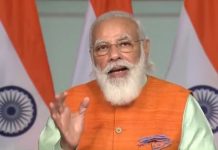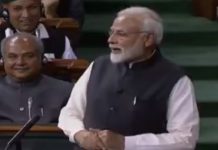India’s rising global influence, economic interests in the Indo-Pacific, the shift of economic power to Asia, and China’s continued assertions are drawing New Delhi into a range of triangular partnerships. A report by Niivedita Mukherjee

At a time when the international community—mired in multiple conflicts and facing a stalemate at the United Nations—proactively seeks trilateral alliances for strategic and economic security, India’s policy on trilateral cooperation is also undergoing a significant recalibration. India’s growing clout in the world and economic interests in the Indo-Pacific, shift of economic power to Asia, and China’s continued assertions are drawing New Delhi into a slew of triangular partnerships. These alliances aim to address shared concerns, support India’s developmental goals, and benefit its less privileged Global South partners. While trilaterals are not new to India’s cooperation practices, as demonstrated by the India-China-Russia format in the 1990s and the IBSA with Brazil and South Africa in 2003, these mechanisms are work in progress, marked by successes and failures. But many experts like Kabir Taneja, Deputy Director and Fellow, Observer Research Foundation, believe them to be a good format for India to engage with partners from a variety of backgrounds. Like with smaller platforms, trilaterals are more nimble in nature, easier to navigate. “These are sort of alternative architectures being produced, which are completely new and different and India is one of the countries which is seen as a stakeholder of these things. As far as India goes, the main interest here is that it is able to take onus and responsibility of these newer systems that are in play,” says Taneja.
For instance, in 2022, the Ministry of External Affairs launched the Trilateral Development Cooperation Fund to support private sector enterprises in big-ticket investment projects in the Indo-Pacific region and other geographies. “Importantly, these partnerships will also align with India’s larger geoeconomic objectives, providing momentum to both economic and foreign policy efforts,” opines Bipul Chatterjee, Executive Director, CUTS International. Since 2011, India has established three trilaterals with Japan, three with Australia, two with the US, two with France, and one each with Indonesia and the UAE
From India’s standpoint, geoeconomic deliverables may be seen in two contexts – first the global messaging that needs to go out from the establishment of these mechanisms as counterweights to the increasing Chinese belligerence and second, the long term economic and developmental benefits they can shower on the participants. “Trilateral development cooperation as a key pillar of India’s economic diplomacy,” points out Chatterjee. “It has the potential to firm up India’s position as a bridge between the North and South. Leveraging its credentials as a trusted development partner, by harnessing Northern funds for transformative physical and digital infrastructure projects in Southern recipients around the world, India can establish its credentials as a true Vishwamitra,” says Chatterjee.
A strategic move by India which marries these objectives of development and enhancing its footprint is the recent trilateral partnership with the US and South Korea. This builds on the US- India initiative on Critical and Emerging Technology in January 2023, followed by the US-South Korea Next Generation Critical and Emerging Technology Dialogue in December 2023, to fructify into a trilateral technology dialogue. What India can tangibly benefit from is economic security, supply chain resiliency and emerging technologies in the broader Indo-Pacific region.
Though countering China may not be a conscious strategy in India’s decision to onboard a Triangular Development Partnership with the US and Tanzania to strengthen energy infrastructure and promote renewable energy development in Tanzania, the Chinese presence in the continent is not lost to anyone. India, as part of this first-of-its-kind alliance on the African continent, will be instrumental in engaging Tanzania’s policymakers, regulators, utilities, academia, and the private sector, in order to expand the use of renewable energy in the country and promote climate-smart energy investments. Since 2013, Tanzania has increased connections from just about 1.2 million then to over 4.5 million in 2023. The partnership will also support Tanzania’s continued emergence as a net regional energy exporter in East Africa.
An ambitious trilateral with an eye on development and China’s advances is the India-France-Australia trilateral architecture. The Third India-France-Australia Trilateral Focal Points Meeting, held on 19 June 2024, has brought the three partners a long way since the alliance was envisioned by President Emmanuel Macron in May 2018 as a new strategic alliance between the three countries to respond to challenges in the Asia-Pacific region, explicitly, the growing assertiveness of China. India is seen by Macron and Australian Prime Minister Anthony Albanese as a natural ally in their vision for a free, open, inclusive and resilient Indo-Pacific, to be enabled through enhanced cooperation through maritime surveillance agencies, including in partnership with India.
The IFA, using the joint roadmap agreed upon in February 2023, has since been pushing to serve as a forum to promote the design and execution of projects in areas such as solar and nuclear energy, fight against climate change, promotion of compatibility and joint development and co-production in defence, digital and innovation, development of trilateral cooperation between relevant academic and research institutions. A number of other areas of cooperation, including developing quality infrastructure and critical and emerging technologies are also in the works, going by the 2nd IFA focal meeting.
There are some trilaterals which are displaying a lot of promise in areas such as defence cooperation, such as the India-UAE-France mechanism. The Trilateral which had its second Focal Points Meeting virtually on 9 July, 2024, is making progress under the joint roadmap and discussing new initiatives to further strengthen cooperation. The initiative forged by the Foreign Ministers of France, India and the UAE, meeting in a trilateral format in February 2023 for the first time, harnesses the synergies of France which has emerged as a strong defence partner for military modernisation. Similarly, the UAE has embarked on a military modernisation programme and both India and the UAE are buyers of French Rafale jets, paving the way for 3-way joint exercises and training.
The India-South Korea-US trilateral partnership, which builds on the inauguration of the US India Initiative on Critical and Emerging Technology in January 2023, followed by the US-South Korea Next Generation Critical and Emerging Technology Dialogue in December 2023, fructified into the first inaugural trilateral technology dialogue in Seoul in March 2024. The now firmed up trilateral promises to bolster cooperation in areas of semi-conductor supply chains, digital public infrastructure, artificial intelligence and quantum computing. India’s emergence as a significant importer of military equipment opens opportunities for collaboration with exporters like South Korea and the United States to further develop their defence industries.
There are examples where triangular projects did not materialise at all. For instance, according to an ORF study, the India–UAE–Ethiopia partnership for an ICT Centre for Excellence in Addis Ababa failed to take off because the Ethiopian government could not provide land for the project. “Going forward, the focus needs to be on further diversifying the nature of such cooperation beyond project exports, and identifying more avenues for trilateral cooperation,” points out Chatterjee.
Taneja also doubts that any trilateral really at this point of time has delivered anything significant. “Trilateral mechanisms are, however, a very broad and uncharted territory for the moment. So while there are a whole bunch of trilateral ecosystems at play right now, we still need to see how successful they are in actually delivering proper institutional worth among any of these three countries that are participating,” adds Taneja who argues for stronger outputs and blueprints on what kind of vision it encapsulates.













